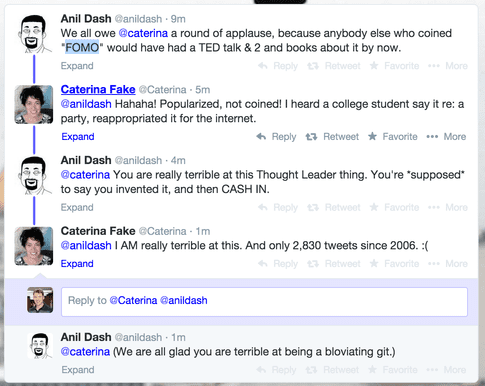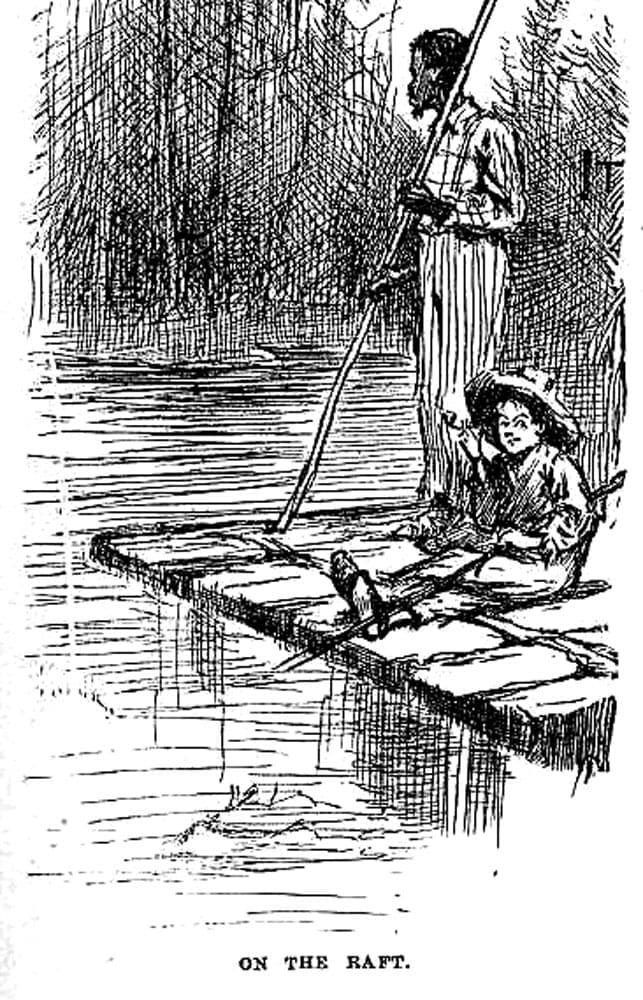Man, you are really missing out!
(And, that’s the cue for professional social media gurus to keep moving, nothing to see here. Because I’m making an insider joke that you, dearest with the beginner mind, are gonna get in a minute.)
Beginner mind. Zen mind. Right on.
Today, we’re going to talk about something that I still get asked by social media novices. We’re going to talk about the streaming currents of content which comprise social media.
So, You’re New to Social Media, Eh?
- Maybe you hired a consultant to get together a game plan and tasked your assistant with running the plays.
- Or maybe you’re doing it yourself, bootstrapping it based on what you learn from the blogosphere.
Dude, you can totally learn everything you need to know about social media and content marketing on the blogosphere.
For that matter, you can probably learn everything you need to know about anything from home brew to home birth…
Perhaps you’ve just cleared up funding from your executive board to start doing social media.
Or you’re two years into getting started with it.
Or you’ve been poking around in your personal private social feeds and wondered this same thing many times yourself.
The Social Media Question I’ve Been Asked So Many Times:
“I try really hard, but sometimes I find that I just don’t have time and I can’t read everything in my feed. That’s terrible right? I should try harder?”
Now, if I were at happy hour with my “pro” friends, and I told this story — there’d be spit-takes and competitive snark.
But that’s because they’re jaded. They’ve been doing it too long. And, probably their neuroanatomy is irrevocably changed by it.
And we sent hand-written thank you notes for birthday cards and gifts that arrived in the mailbox.
And we read the entire newspaper — ON PAPER — over breakfast. (Well, I never did. But I have it on good authority that there truly exist people who read more than just the funnies and horoscopes.)
And, when a scandalous book like The Thorn Birds was on reading lists for higher grades, we read it just because we could. Even though we didn’t get it. At all.
And when we first signed up for Facebook — those of us who were well grown before it came out and didn’t get to experience it as part and parcel of the college experience — we found a handful of friends, maybe a dozen. And we religiously checked to see what was going on in their world.
Or, at least I did. I’m sure there were some who don’t have that gene to keep track of the comings and goings of the flock, but I digress.
Then we friended more people. People from church and from the kids’ soccer games and a few good eggs from work.
Then we discovered that we could “stalk” — that’s such a harsh word, really — several “somebodies that we used to know” from high school.
Then we joined Twitter or Instagram or Pinterest. Or all three.
And maybe we already had a LinkedIn account that kept sending emails. No matter how many times we updated our subscription preferences.
Maybe we subscribed to three or ten podcasts for long drives and workouts.
And maybe we took a few recap newsletters to our email inbox just to make sure we weren’t missing anything in our field.
And then we discovered Netflix or Hulu or Amazon Prime. And…
What was my point?
Oh, Right! FOMO Stands for “Fear of Missing Out”
I’d like to contend that this is not a new phenomenon.
If you’ve ever witnessed a grouchy toddler refusing to take a nap, even though they’re clearly at their wit’s end, it’s because they’re afraid they’re going to miss something. Something Really Important.
For that matter, you may recall high school in the same sorta way I do? (Who’s got two thumbs and still doesn’t know how to play beer pong? This chick.)
It’s not a new thing, then, just an accelerated one. Like almost everything else.
(The older I get anyway. Have you noticed, too? That things are speeding up. Not that I’m getting older. They’re smile lines, okay?)
Boston Magazine offers one definitive-ish account for who came up with this brilliant acronym.
Personally, I prefer Mr. Anil Dash’s accounting as it’s posted over on Quora.

Wikipedia has a nice long entry on FOMO and its meaning. But, quite frankly, between you and me, I didn’t read it. Who’s got time?
Which brings me back to my point. Again.
You Don’t Have to Read Your Whole Feed!
You Don’t Have to Skim Your Whole Feed!
As your online presence, be it personal or professional, gets bigger…
YOU WON’T EVEN SEE your whole feed.
And, that’s okay.
That’s how we social media professionals have stayed out of rubber rooms and fancy jackets with sleeves like Edward Scissorhands, all criss-cross applesauce.
You can exhale now.
Here’s what I tell my clients both in the beginning, when we’re first consulting on strategy and I’m doing some informal training, and again in 6-to-18 months, when they’ve had a chance to encounter this phenomenon on their own.
And have a right proper little freak out about it.
But! OMG! Shouldn’t I be reading everything from everybody??? ~GASP~
No.
Content is a River.
Think about Huck and Jim Drifting by on Their Raft

Way back when, a nice young feller, name of Samuel Langhorne Clemens, took two years a study on the mighty Mississipp’, a-learning her landmarks and her currents, so that he could earn his river pilot’s license.
Well sir, ma’am, that strapping young lad became a writer, fer’n he was real good with his letters — I gotta stop with the dialect. My apologies.
Upshot: Mark Twain’s pen name came from his trade. “Marking twain” means the river is two fathoms deep and, therefore, safe for a steamboat. (That’s what Wikipedia says, and I’m sticking to it.)
Now, Mr. Twain wrote some famous books of which you’ve no doubt heard some tell. Or even had the great good fortune to read yourself, or read to your kids, or have read to you when you were a wee lad or lass.
Or to explore in a senior seminar about race and class politics in American literature.
Regardless, Huck and Jim had a mash-up of our modern Hollywood plot themes — bromance and road trip — rolling on the river.
Like Ike and Tina. But not really. (To be honest, I’m envisioning a Seth Rogen remake for this scenario. Nothing heavy.)
Let’s Say You’re Weeding Your Garden near the River’s Edge…
As you stand up to stretch your aching back, you scan the horizon in all directions. Checking the weather, no doubt, and, like you always do and always will, taking in the grandeur of that great Mississippi River.
Lo, it’s Huck and Jim out for a float! Seeing them, you take off your hat and wave at them with it. They do the same. Right back atcha, neighbor.
You go back to work, weeding the strawberry patch.
Next time you stretch your back, do you expect to see Huck and Jim on their raft?
Don’t be silly! That’s one of the biggest strongest longest rivers in the world, ya hear?
Of course you’re not going to see them again. Not on this trip.
Content is like that. It flows with the current, pushed along by the volumes of water behind it, pushed along by the water cycle and snow melt and the way things have always been.
The Difference with Content is Persistence.
Unlike a little ol’ log raft in the riverwash, a determined netizen can find most any piece of content, flotsam and jetsam though it may be, that’s been published to a social feed. Ever. You can. Your friends can. Your clients can.
So, you see, you don’t have to read everything that comprises your feed.
If it’s important enough, you can find it when you need. It’s like just-in-time short-term memory.
Google indexes tweets. The Library of Congress catalogues them.
You don’t have to read them all. And you won’t be missing out.
What’s more, your followers, fans, and friends shouldn’t expect you to.
No more than Huck and Jim would expect you to see them when they’ve gotten a dozen miles along downstream.
What you do need to be diligent about, though, is responding to direct engagements.
You Do Need to Reply to All Comments and Questions.
When you benefit from direct contact by a consumer, user, follower, prospect, whomever, you should reply in a timely professional fashion that’s on message and on brand.
So, keep an eye on your notifications.
But, you can stop worrying about reading the whole feed. All better now?
Image credits:
Huck and Jim: By E.W. Kemble from the 1884 edition. [Public domain], via Wikimedia Commons
Updated December 2, 2025
Suzanne Hoenig
Latest posts by Suzanne Hoenig (see all)
- The Anti-Social-Media-Marketing Manifesto 2016 - October 19, 2016
- Which 3 Social Media Platforms Will Be Around in 3 Years? - October 13, 2016
- White Papers: Still a Way to Compel and Convert Leads - September 14, 2016





